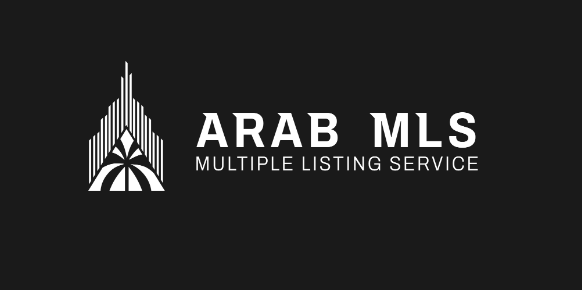In the digital era, real estate marketing transcends traditional boundaries, demanding not only compelling listings but also strategic online positioning. Multiple Listing Service (MLS) entries remain the cornerstone of property marketing, yet their true power unfolds when paired with effective search engine optimization (SEO). Optimizing MLS listings for search engine visibility amplifies exposure, draws targeted traffic, and ultimately accelerates sales. The challenge lies in navigating the technical and creative nuances that elevate a typical listing into a digital asset capable of attracting organic interest in a fiercely competitive marketplace.
This article explores methods by which real estate professionals can systematically enhance their MLS listings to perform well on search engines. From understanding search intent and keyword integration to mastering metadata and leveraging multimedia, the strategies outlined provide a roadmap to maximizing listing impressions and engagement.
The Importance of SEO in MLS Listings
Real estate buyers and renters increasingly initiate their property searches through online engines rather than traditional MLS interfaces. Google, Bing, and other search platforms serve as front doors to the housing market, directing prospects to third-party portals or directly to brokerage websites featuring MLS data. In this context, a well-optimized MLS listing serves as the foundation for a strong online presence.
Without SEO considerations, listings risk being obscured in vast pools of competing content. Even the most attractive property descriptions and high-quality images will not fulfill their potential if they fail to reach relevant audiences. Properly implemented SEO techniques increase a listing’s ranking in organic search results, making it more discoverable for users actively seeking properties matching their criteria.
Understanding Buyer Search Behavior and Intent
Optimizing an MLS listing begins with an in-depth understanding of how prospective buyers or renters search for properties online. Search intent can be categorized broadly into informational, navigational, and transactional queries. For real estate, the focus centers on transactional intent—users looking to find available homes or rentals in specific locations with particular features.
Keywords and phrases used during searches often reflect buyer priorities, such as “3-bedroom house in Jackson Heights,” “condo near Queens subway,” or “pet-friendly rentals in Elmhurst.” Recognizing and incorporating these terms within listing titles and descriptions aligns content with what users actively seek, increasing organic traffic quality.
Additionally, geographical specificity matters greatly. Including well-known neighborhood names, landmarks, school districts, or transit lines relevant to the property helps capture searches anchored by location. This relevance signals to search engines that the content appropriately matches user queries.

Crafting Keyword-Rich, Natural Descriptions
Effective MLS listings integrate target keywords fluidly within the property narrative without overwhelming or appearing mechanical. Keyword stuffing—a practice of excessive and unnatural repetition—diminishes readability and risks penalization by search algorithms.
Instead, agents and copywriters should infuse descriptions with varied but related keywords, synonyms, and phrases that describe property features and benefits. For example, instead of repeating “spacious kitchen” multiple times, terms like “open-concept cooking area,” “modern appliances,” and “abundant counter space” contribute semantic richness.
Writing should also anticipate questions or concerns potential buyers might have, addressing them seamlessly within the narrative. Mentioning proximity to parks, availability of parking, recent renovations, or community amenities serves dual purposes: engaging readers and incorporating relevant search terms.
Optimizing Titles and Headings for SEO Value
Titles and headings carry significant weight both for search engines and users scanning listings quickly. MLS platforms commonly display the listing title prominently; this element should encapsulate the property’s unique selling points concisely and keyword-optimized.
A compelling title might read, “Charming 3-Bedroom Townhouse Near Jackson Heights Park,” immediately conveying location, size, and appeal. Creating such direct, descriptive titles improves click-through rates by matching prospective buyers’ searches more precisely.
Within description fields, strategically placed subheadings can organize content, enhancing readability and boosting SEO by marking important sections. While MLS formatting limitations vary, using natural separators like short phrases or bullet-style lines without sacrificing flow can assist both users and search engines.
Leveraging Multimedia to Enhance Engagement and SEO
Visual content not only captivates potential buyers but also plays a crucial role in search engine ranking. Listings with high-quality photos, virtual tours, and videos tend to receive more engagement and longer on-page times, positive signals in SEO algorithms that can elevate content standings.
File names and alt-text for images must be descriptive and incorporate relevant keywords thoughtfully, as search engines crawl these attributes to understand content context. For instance, naming an image “Jackson-Heights-garden-patio.jpg” paired with alt-text such as “Sunny garden patio in Jackson Heights townhouse” enhances indexing accuracy.
Video tours, when hosted on platforms like YouTube linked within MLS descriptions or brokerage websites, create additional discovery pathways through video search results and embed rich content for enhanced user experience.
Importance of Accurate and Consistent Data
Maintaining accuracy and consistency in MLS listings significantly impacts search engine credibility. Discrepancies such as mismatched addresses, outdated pricing, or incorrect property details can confuse search engines and frustrate users, thereby harming rankings and reputations.
Real estate professionals should audit listings regularly to ensure up-to-date information and seamless synchronization between MLS databases and syndication platforms. Structured data markup, often implemented behind the scenes on brokerage websites but increasingly applicable to MLS feeds, allows search engines to parse listing attributes precisely, improving rich snippet eligibility.
Consistency in formatting details—such as phone numbers, agent names, and brokerage branding—also contributes to trustworthiness signals evaluated by search algorithms.
Utilizing Local SEO Techniques
Given the inherently local nature of real estate, applying local SEO principles to MLS listings is especially important. Embedding neighborhood references, local school names, nearby transit options, and community features tailors content to geographically related searches.
Linking listings to authoritative local web pages, such as municipal sites, school districts, or community associations, can further bolster local relevance. Brokerages that maintain localized blog content supporting featured listings amplify keyword authority and create inbound link opportunities.
Claiming and optimizing business profiles on Google My Business and local directories, while maintaining NAP (name, address, phone) consistency, ensures that broker and agency details appear prominently alongside property listings.

Monitoring Listing Performance and Continuous Improvement
SEO is a dynamic process that benefits from data-driven adjustments. Real estate professionals should utilize available analytics tools to track MLS listing visibility, click-through rates, engagement time, and lead generation from organic search results.
Regularly reviewing performance metrics identifies which keywords resonate most, which property features attract attention, and where drop-offs happen in the user journey. These insights inform refinements in copy, imagery, and metadata, enabling ongoing optimization.
Moreover, staying abreast of search engine algorithm updates and industry trends allows for timely adaptations. Changing consumer behaviors and evolving platform rules necessitate flexibility to maintain and improve search rankings over time.
Integrating SEO Strategy into MLS Listing Practices
In an increasingly digital environment, optimizing MLS listings for search engine visibility is no longer optional but essential. By aligning content with search intent, mastering keyword integration, embracing multimedia enhancements, and maintaining data accuracy, real estate professionals can significantly improve listing discoverability.
Implementing local SEO strategies and committing to continuous performance monitoring further strengthens a listing’s competitive edge. These efforts translate into greater exposure, higher-quality leads, and accelerated transactions.
For real estate brokers and agents, mastering the art and science of MLS SEO supports both immediate sales goals and long-term brand-building within bustling digital marketplaces. As search engines evolve and consumer habits shift, embracing these techniques ensures that listings not only exist but thrive in front of the right audiences at the right moment.
Frequently Asked Questions about Optimizing MLS Listings for Search Engine Visibility
-
Why is SEO important for MLS listings?
Search engines drive the majority of online property searches. By aligning MLS listings with SEO best practices, agents ensure their properties appear in relevant search results, attracting qualified buyers without relying solely on MLS portals. -
How does one identify the right keywords for a listing?
Effective keyword selection begins by researching the search terms potential buyers use. Local neighborhood names, property features, and amenities are natural focal points. Tools like Google’s Keyword Planner reveal popular phrases, helping agents shape descriptions around user intent. -
What is the best way to optimize a listing title?
A compelling title communicates what makes the property unique and includes the primary keyword, such as location or home type. For example, “Charming Brownstone in Brooklyn Heights” immediately tells readers—and search engines—what to expect. -
How can multimedia elements boost search visibility?
High-quality photos, virtual tours, and videos increase user engagement and time on page, which search algorithms reward. Properly naming files and adding descriptive alt-text helps search engines understand content context and improves indexing. -
Why must data accuracy and consistency be maintained?
Search engines prioritize reliable information. Discrepancies in address, price, or property details can diminish rankings and confuse potential buyers. Regular audits ensure MLS data and syndicated platforms remain synchronized and trustworthy. -
What local SEO tactics enhance MLS listings?
Embedding neighborhood landmarks, school districts, transit lines, and community amenities into descriptions targets geographically specific searches. Linking to authoritative local resources and maintaining consistent NAP (name, address, phone) data strengthens local relevance. -
How should performance be monitored and improved?
Agents can use analytics to track impressions, clicks, and engagement metrics. Reviewing which keywords drive traffic and where users drop off allows for iterative refinements in copy, imagery, and metadata to boost ranking and conversions. -
What SEO pitfalls should agents avoid?
Keyword stuffing, duplicate content, and outdated listings undermine credibility and may incur search penalties. Ignoring mobile optimization and neglecting metadata—titles and descriptions—limits a listing’s discoverability on both search engines and MLS platforms.













